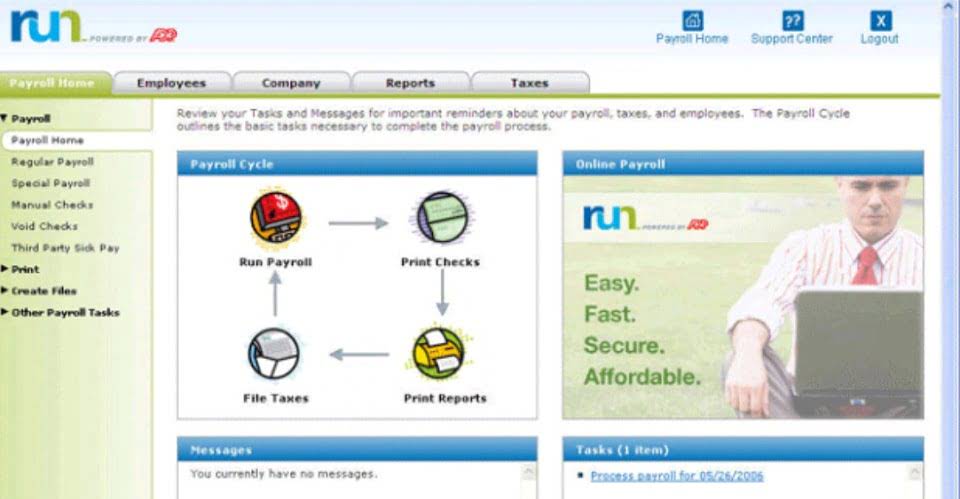
In-kind contributions, such as donated goods, services, or assets, must be recorded at fair market value per Generally Accepted Accounting Principles (GAAP). This ensures financial statements accurately reflect the organization’s resources and financial position. Almost all not-for-profit organizations rely on contributions to help fulfill their mission.
The research credit: Business-component requirement

Regular communication with donors about fund allocation and outcomes gaap accounting for donated assets builds trust, strengthens relationships, and secures future support. These agreements should clearly define the roles and obligations of both parties, including financial commitments and benefits like logo placements or event mentions. If you have any questions regarding donated nonfinancial assets or would like a sample gift acceptance policy, please reach out to your Hawkins Ash professional. This contribution is conditional based on a measurable performance-related barrier. Kappa University must actually collect the entire $6 million matching contributions before it recognizes the donor’s gift as contribution revenue. Assets received in a conditional contribution should be accounted for as a refundable advance until the conditions have been substantially met or explicitly waived by the donor.
Exchanges vs. Contributions

One indicator in concluding whether a transfer of assets is a contribution or an exchange is that the positive sentiment from acting as a donor does not constitute commensurate value received by the resource provider. This indicator was the basis for concluding the contribution from Bravo was not an exchange. Charlie, however, receives more than positive sentiment, such as greater visibility than Bravo and the means to promote itself and its products. Not-for-profits will be required to provide additional information on the contributions of nonfinancial assets they receive under a new accounting standard issued Thursday by FASB.
4.2.1 Applying the ASC 820 model to donations of noncash assets
- In the absence of fair market values; estimations, independent appraisals, or valuation techniques should be used to record the value of donated assets.
- Delta Council coordinates fundraising and other activities with NFPs with similar missions and objectives.
- The way you report the receipt of the asset on your financial statements depends on the type of entity from which you received the donation.
- In addition, the determination of the fair value of publicity is highly subjective.
- It is best practice to have a written gift acceptance policy that documents the kinds of gifts the organization accepts, how they are valued, and how they will be handled (used in programs, sold, etc.).
- For instance, a donor may donate cash for a research and development program to a research institute with certain conditions.
These assets also include free or reduced rent for use of land, buildings, or equipment. For example, if the provider sets a condition to receive the patents or copyrights of the research conducted by the institute in a reciprocal way for the donated capital, it will be recognized as an exchange transaction. An organization can receive donated capital in the form of contributed services as well. Valuation techniques, such as market, cost, or income approaches, are used depending on the asset’s nature. For example, the fair value of donated securities might be based on the quoted market price on the donation https://www.bookstime.com/ date.
- This pledge meets the definition of a contribution in that it is an unconditional transfer of cash that is both voluntary and nonreciprocal.
- This software can track donations in detail, generating accessible reports for financial statements and donor acknowledgment.
- Non-profits should use dedicated accounting software or tracking systems to record and categorize each donation, whether cash or in-kind.
- Nonfinancial assets include food, clothing, pharmaceuticals, supplies, equipment, vehicles, buildings, and gifts to be auctioned off at a special event.
- Contributions funding activities consistent with the recipients’ normal operations are generally classified as contributions without donor restrictions.
- The donation is unconditional and meets the recognition criteria of being the nonreciprocal transfer of capital.
Individuals may deduct donations up to 50% of their adjusted gross income, while corporations are typically limited to 10% of taxable income. Proper documentation, such as appraisals or receipts, is essential to substantiate these deductions. Understanding the tax implications of donated assets is crucial for financial planning and compliance. The Internal Revenue Service (IRS) provides guidelines on reporting and handling donated assets, impacting both donors and recipients. Explore the process and financial effects of accounting for donated assets, including recognition, valuation, and tax considerations. Report a gain on receipt of donated asset in the non-operating gains and losses section of your income statement.


Strategic planning, such as engaging donors and leveraging online platforms, can maximize auction success and community involvement. The IRS requires non-profits to acknowledge in-kind donations with a description but not necessarily a value. For donations over $5,000, the donor must obtain an independent appraisal for tax purposes. Non-profits should refer to IRS Publication 561 for guidelines on determining the value of donated property. Effective management of in-kind donations and valuation of non-cash contributions greatly depends on the knowledge and skills of the organization’s staff and the strategic use of volunteer hours.

- Valuing in-kind contributions can be challenging, especially for specialized services like legal or professional assistance.
- The following best practices should be implemented to maintain integrity and consistency in handling such contributions.
- By definition, any societal benefit received by Alpha is not considered to be of commensurate value.
- The organization receiving these services will record donated capital for the period in which services are rendered.
- Recipient organizations, especially non-profits, benefit from tax-exempt status, allowing them to receive donations without incurring tax liabilities.
Charlie Corporation (Charlie), a manufacturer of consumer products, pledged $3.5 million for the event. As with Bravo, the pledge document required ABC to perform specific activities, all of which are consistent with its normal operations. It agreed to identify Charlie as a sponsor of the event on its website and in other communications and to permit Charlie to publicize its participation in its corporate advertising. Contributed tangible property worth accepting generally possesses the common characteristic of all assets—future economic benefit or service potential. The future economic benefit or service potential of a tangible item usually can be obtained by exchanging it for accounting cash or by using it to produce goods or services.
FASB proposes guidance on accounting for debt exchanges
FASB has recently released new guidance on how to determine whether a transaction is a contribution or an exchange. The authors explain how the new guidance works and provide examples of how nonprofits should apply it when recognizing revenue from these transactions. The estimations may include an evaluation of nonfinancial assets received or enhanced value of an underlying asset or the present value of future cash flows of the benefit received. On the income statement, recognizing contribution revenue from donated assets increases total revenue, impacting profitability metrics such as the operating margin even for non-profits that do not pursue profit-driven activities. This revenue increase can shape stakeholders’ perceptions of the organization’s financial health and its ability to attract and utilize resources effectively.
